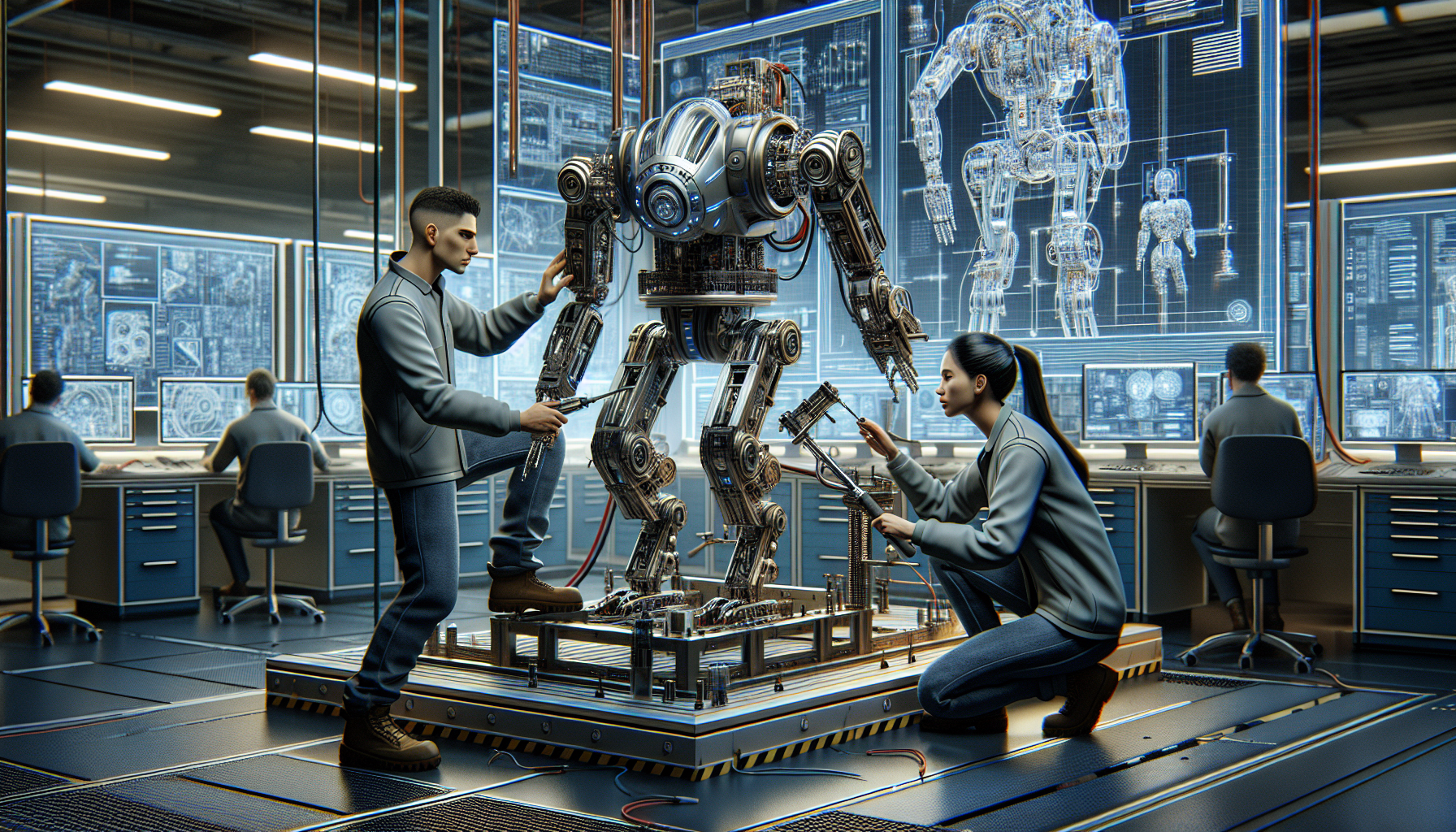
Clone Robotics’ Protoclone: The Next Generation of Muscular Androids
The field of robotics is advancing at a stunning pace, and Clone Robotics is leading the charge with its groundbreaking invention, the Protoclone. This prototype humanoid robot is engineered to replicate human musculature, providing an unparalleled level of realism in robotic motion. But what implications does this hold for the future of robotics, and how does it stack up against other humanoid robots currently in development? Let’s explore the specifics.
The Protoclone: A Preview of Robotics’ Future
The Protoclone from Clone Robotics serves as an early model of what the company envisions becoming a fully operational, anatomically precise android. In contrast to conventional robots that depend on stiff mechanical joints, the Protoclone is equipped with artificial muscle fibers that closely imitate human musculature. These fibers operate beneath a white synthetic skin, producing a strikingly lifelike look and movement.
Clone Robotics claims that the Protoclone features:
- Over 200 degrees of freedom
- More than 1,000 Myofibers (artificial muscle fibers)
- Over 200 sensors for improved feedback and control
The Technology Behind Myofibers
A particularly intriguing feature of the Protoclone is its integration of Myofibers, a proprietary technology created by Clone Robotics. These artificial muscle fibers aim to replicate the characteristics of mammalian skeletal muscle, enabling the robot to move in a more organic and fluid manner.
The Myofibers provide:
- Quick response times (under 50 milliseconds)
- Significant contraction force (each three-gram muscle fiber can produce at least one kilogram of force)
- Effective movement that emulates human biomechanics
This degree of precision and strength could transform how humanoid robots engage with their environment, potentially equipping them to handle intricate tasks that necessitate agility and power.
Why Is the Protoclone Suspended?
In the footage shared by Clone Robotics, the Protoclone is observed hanging from a support structure instead of standing independently. This is typical in robotics development, as early prototypes often lack the structural stability required to bear their own weight.
Developers typically utilize support arms or suspension systems to evaluate movement capabilities prior to fine-tuning the design for complete autonomy. Once the Protoclone receives a comprehensive skeletal and balance system, it may gain the ability to walk and carry out tasks autonomously.
The Competition in Humanoid Robot Development
Clone Robotics is not the sole player striving to develop humanoid robots. Numerous other companies are investigating similar concepts, each with its unique strategy:
- Figure AI is developing humanoid robots but without the emphasis on artificial muscles.
- Tesla has revealed its Optimus robot, despite initial demonstrations raising doubts.
- Meta and Apple are reportedly delving into robotics as a prospective product category.
In spite of the competition, Clone Robotics differentiates itself through its focus on muscle-based motion, which may lead to more lifelike and functional humanoid robots.
Prospective Uses for Muscular Androids
Should Clone Robotics succeed in creating a fully functional humanoid robot, the potential applications could be extensive:
- Industrial automation – Robots could undertake physically demanding jobs in manufacturing and construction.
- Healthcare assistance – Humanoid robots could aid elderly or disabled individuals.
- Search and rescue – Robots with human-like movement could navigate disaster areas more effectively.
- Entertainment and companionship – Realistic androids could find roles in theme parks, films, or even as personal aides.
Conclusion
Clone Robotics’ Protoclone marks a significant advancement in humanoid robot development. By emphasizing artificial muscles and realistic movement, the company is charting a path toward a future where robots can seamlessly integrate into human settings. While challenges persist—such as achieving full autonomy and perfecting the skeletal structure—the progress thus far is undeniably remarkable.
As robotic technology continues to progress, we may soon witness muscular androids performing alongside humans across various industries. Whether this is exhilarating or unsettling for you, one thing is clear: the future of robotics is rapidly approaching.
Q&A: Essential Information About the Protoclone
Q1: What distinguishes the Protoclone from other humanoid robots?
The Protoclone is noteworthy for its use of Myofibers, artificial muscle fibers that imitate human skeletal muscles. This facilitates more natural and fluid motion compared to conventional robots relying on rigid mechanical joints.
Q2: Is the Protoclone capable of walking independently?
Not at this time. The existing prototype is suspended from a support structure because it lacks the requisite balance and skeletal integrity to stand unaided. Future versions may achieve autonomous movement capabilities.
Q3: What are the possible applications of humanoid robots like the Protoclone?
Humanoid robots could be utilized in manufacturing, healthcare, search and rescue, entertainment, and personal assistance. Their capacity to emulate human movement makes them well-suited for tasks needing agility and power.
Q4: What is the strength of the Myofibers in the Protoclone?
Each three-gram Myofiber can produce at least one kilogram of contraction force, rendering them remarkably efficient and powerful for their size.
Q5: Are other firms developing similar humanoid robots?
Indeed. Companies such as Tesla, Figure AI, Meta, and Apple are all investigating humanoid robotics, albeit with varying methods. Clone Robotics’ focus on muscle-based movement helps it stand out.
Q6: When will the Protoclone be ready for commercial use?
There is currently no set release date. The Protoclone remains in the prototype stage, and significant development is required before it can be used in real-world scenarios.
Q7: Should we be concerned about humanoid robots taking over human jobs?
While automation does present challenges for the employment landscape, humanoid robots are more likely to supplement human labor rather than completely replace it. They could handle dangerous or physically demanding tasks, freeing humans to concentrate on more intricate and creative work.
The future of humanoid robotics is unfolding in real time, and the Protoclone offers a captivating glimpse into what lies ahead. Stay tuned as Clone Robotics continues to explore the limits of artificial intelligence and robotics.